Abstract
Eight untrained, obese females (greater than 30% body fat), ages 25-33 yr, were studied before, at 1 wk, and after 6 wk while taking either of two 830-kcal/d diets: carbohydrate-containing (CC) group (n = 4): 35% protein, 29% fat, 36% carbohydrate-restricted (CR) group (n = 4): 35% protein, 64% fat, 1% carbohydrate. Endurance, at approximately 75% of VO2max (maximum oxygen uptake) on a cycle decreased from base line by 50% at 1 and 6 wk in the CR group, but there was no change in the CC group. Preexercise muscle glycogen (vastus lateralis) did not change significantly in the CC group, but was decreased by 49% in the CR group after 1 wk, and by 51% after 6 wk. There was a close correlation between percent decrease in resting muscle glycogen and percent decrease in endurance (r = 0.79, P less than 0.01). The mean fasting and exercise plasma glucose concentration was lower in the CR group than in the CC group after 6 wk, but no subject became hypoglycemic during exercise. Serum FFA, lactate, pyruvate, beta-hydroxybutyrate, acetoacetate, insulin, and glucagon changed similarly in the two groups during exercise at base line, 1 and 6 wk. Glycerol concentration was higher in the CR group during exercise only after 6 wk. Increases in serum lactate concentrations, and a mean exercise respiratory quotient of 0.93 suggested that cycle exercise at approximately 75% VO2max used predominantly glucose as a fuel. Conclusions: Resting muscle glycogen and endurance, during cycle exercise at approximately 75% VO2max, were maintained during a 36% carbohydrate, 830-kcal/d diet. In contrast, significant decreases, occurred in resting muscle glycogen and endurance, during similar exercise, after 6 wk of a 1% carbohydrate, 830-kcal/d diet.
Full text
PDF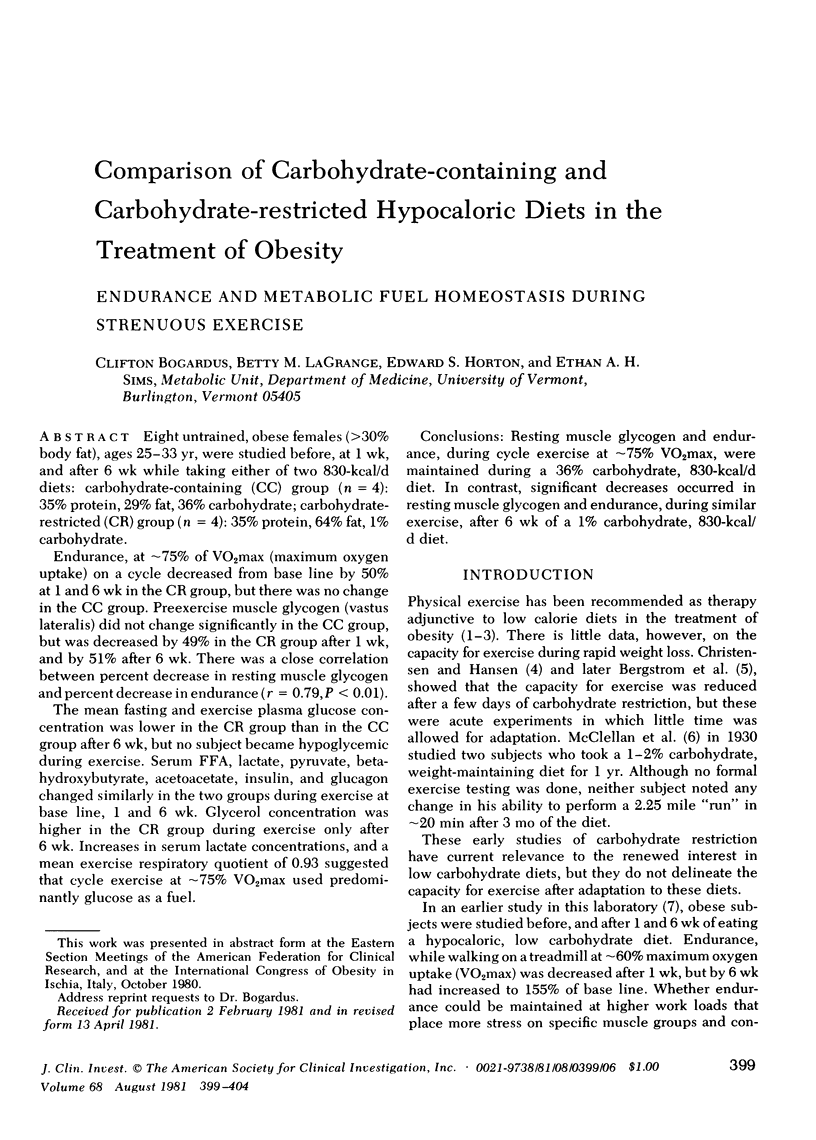
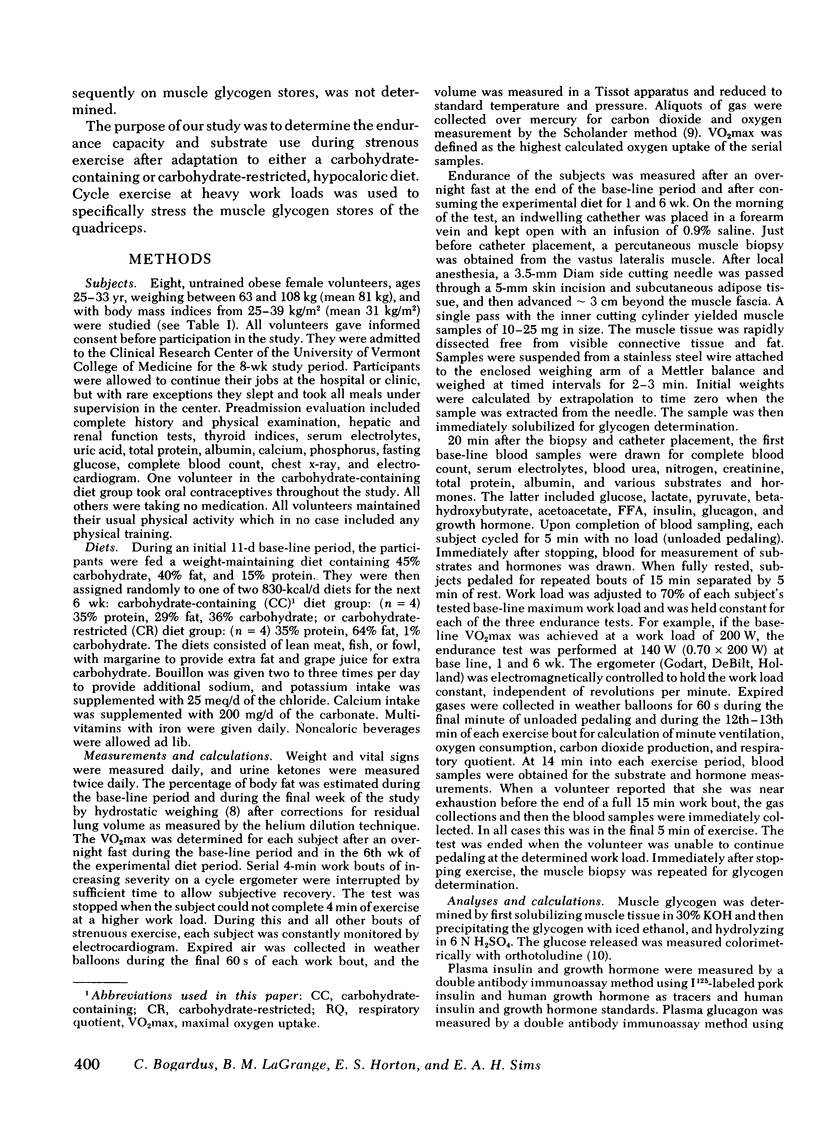
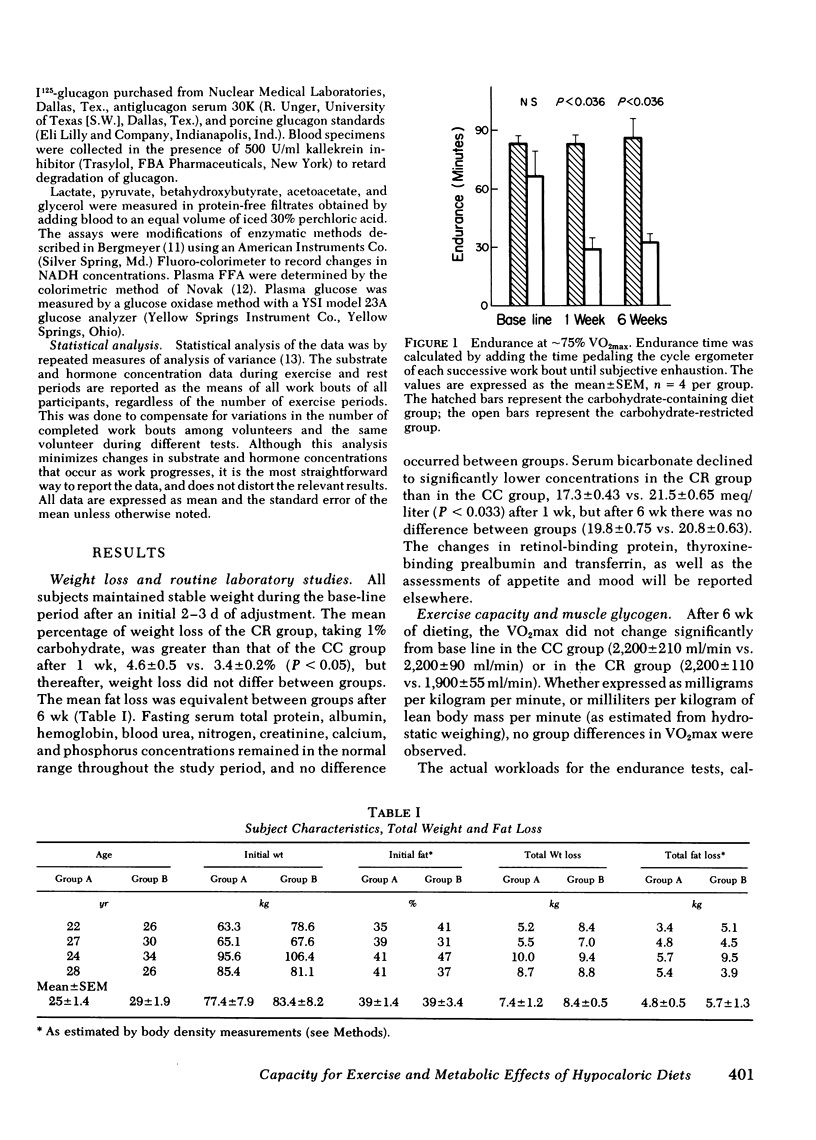
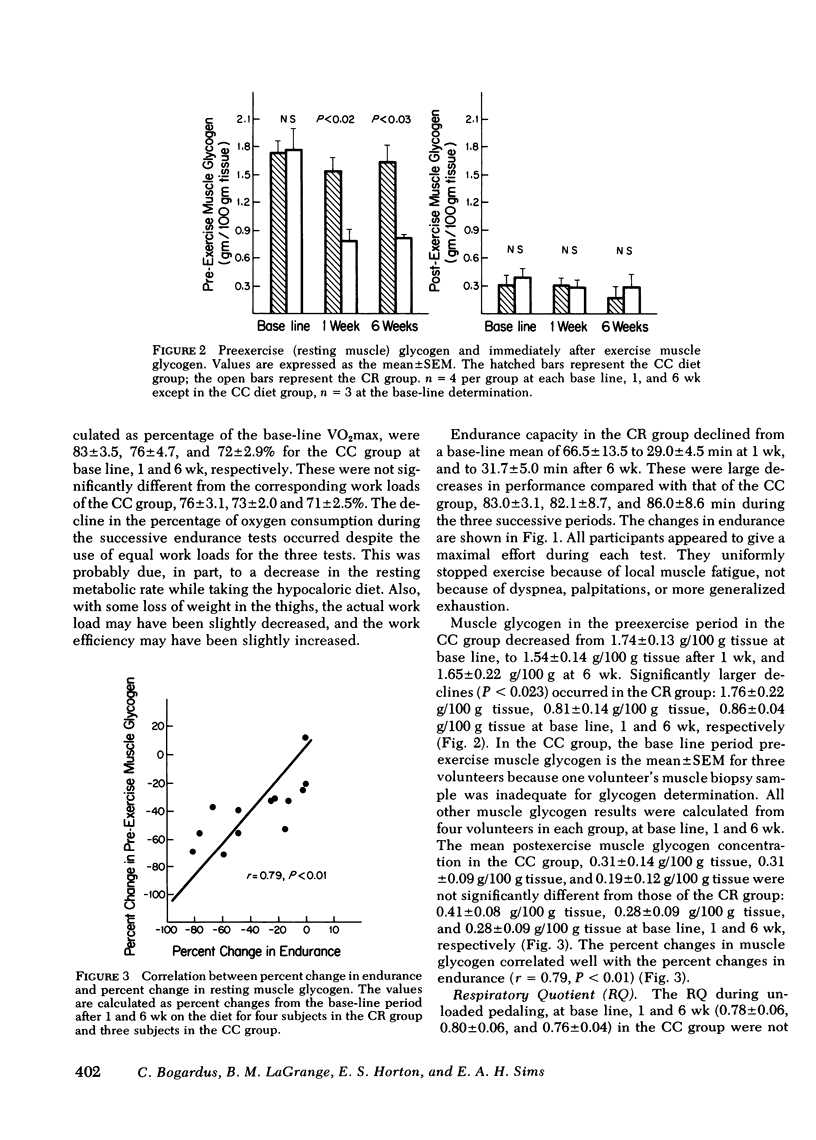
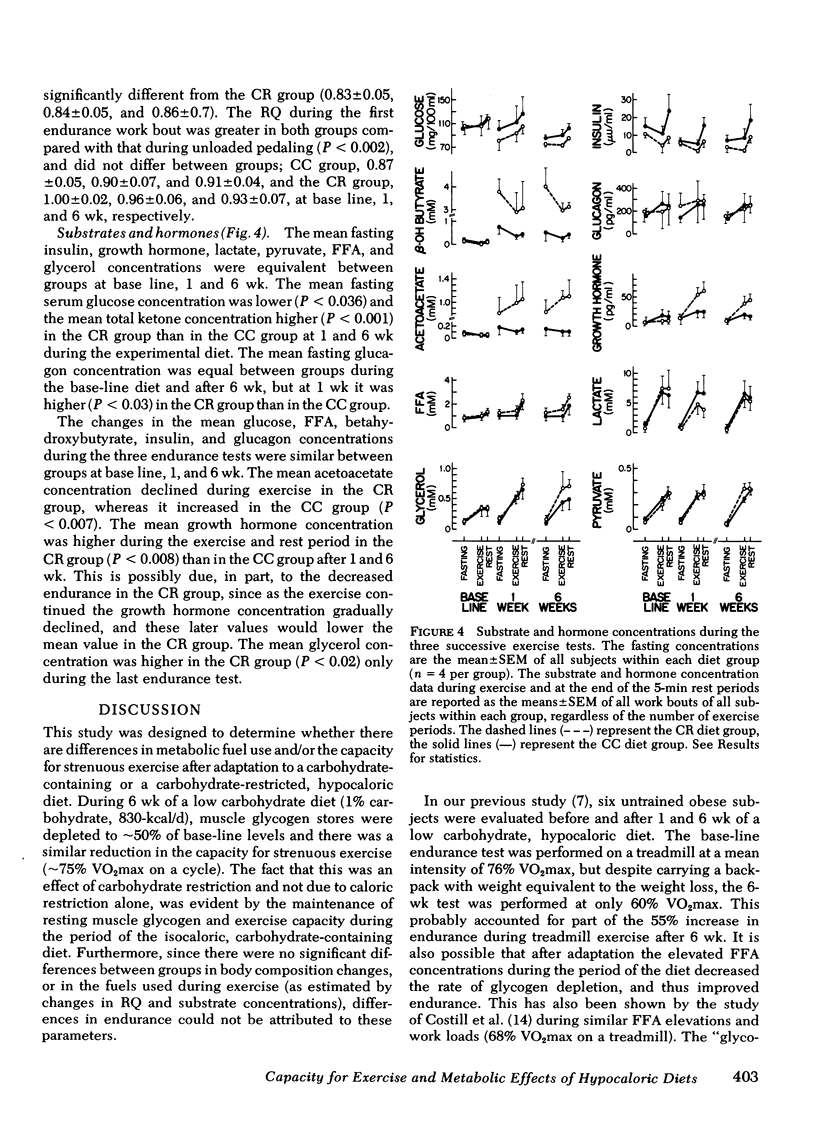
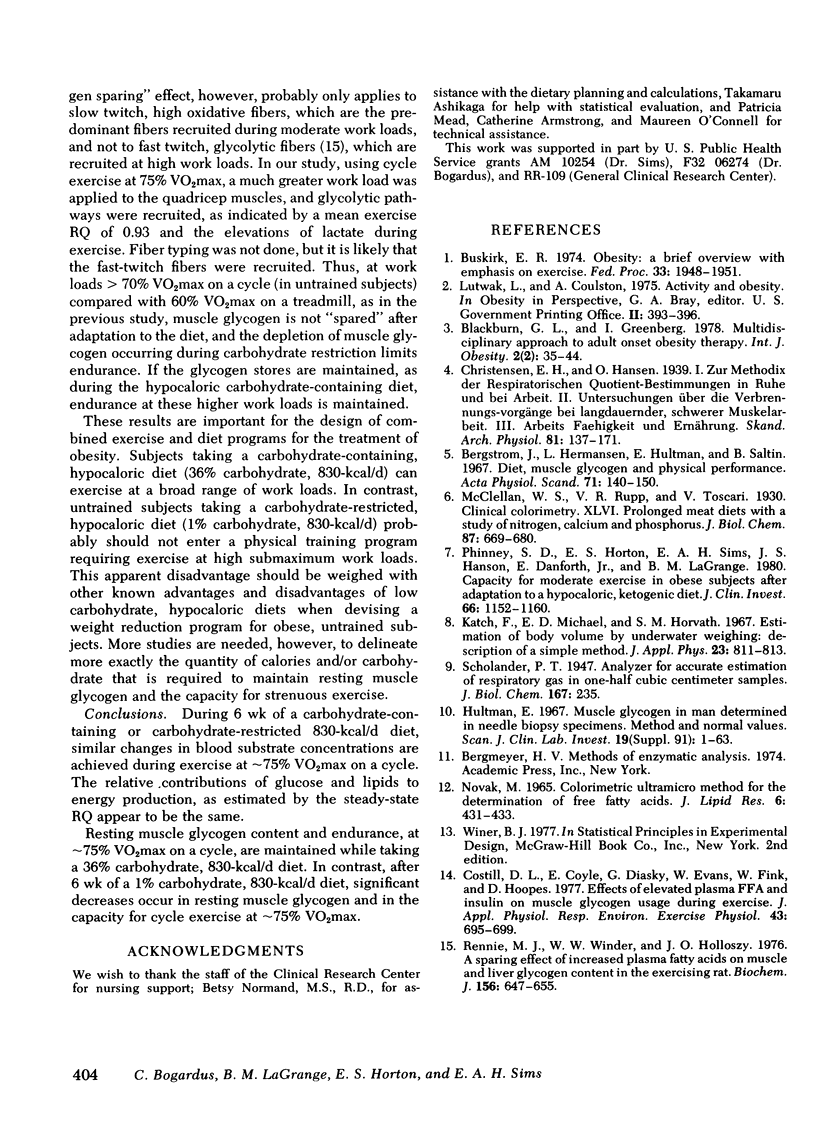
Selected References
These references are in PubMed. This may not be the complete list of references from this article.
- Bergström J., Hermansen L., Hultman E., Saltin B. Diet, muscle glycogen and physical performance. Acta Physiol Scand. 1967 Oct-Nov;71(2):140–150. doi: 10.1111/j.1748-1716.1967.tb03720.x. [DOI] [PubMed] [Google Scholar]
- Buskirk E. R. Obesity: a brief overview with emphasis on exercise. Fed Proc. 1974 Aug;33(8):1948–1951. [PubMed] [Google Scholar]
- Costill D. L., Coyle E., Dalsky G., Evans W., Fink W., Hoopes D. Effects of elevated plasma FFA and insulin on muscle glycogen usage during exercise. J Appl Physiol Respir Environ Exerc Physiol. 1977 Oct;43(4):695–699. doi: 10.1152/jappl.1977.43.4.695. [DOI] [PubMed] [Google Scholar]
- Katch F., Michael E. D., Horvath S. M. Estimation of body volume by underwater weighing: description of a simple method. J Appl Physiol. 1967 Nov;23(5):811–813. doi: 10.1152/jappl.1967.23.5.811. [DOI] [PubMed] [Google Scholar]
- NOVAK M. COLORIMETRIC ULTRAMICRO METHOD FOR THE DETERMINATION OF FREE FATTY ACIDS. J Lipid Res. 1965 Jul;6:431–433. [PubMed] [Google Scholar]
- Phinney S. D., Horton E. S., Sims E. A., Hanson J. S., Danforth E., Jr, LaGrange B. M. Capacity for moderate exercise in obese subjects after adaptation to a hypocaloric, ketogenic diet. J Clin Invest. 1980 Nov;66(5):1152–1161. doi: 10.1172/JCI109945. [DOI] [PMC free article] [PubMed] [Google Scholar]
- Rennie M. J., Winder W. W., Holloszy J. O. A sparing effect of increased plasma fatty acids on muscle and liver glycogen content in the exercising rat. Biochem J. 1976 Jun 15;156(3):647–655. doi: 10.1042/bj1560647. [DOI] [PMC free article] [PubMed] [Google Scholar]


